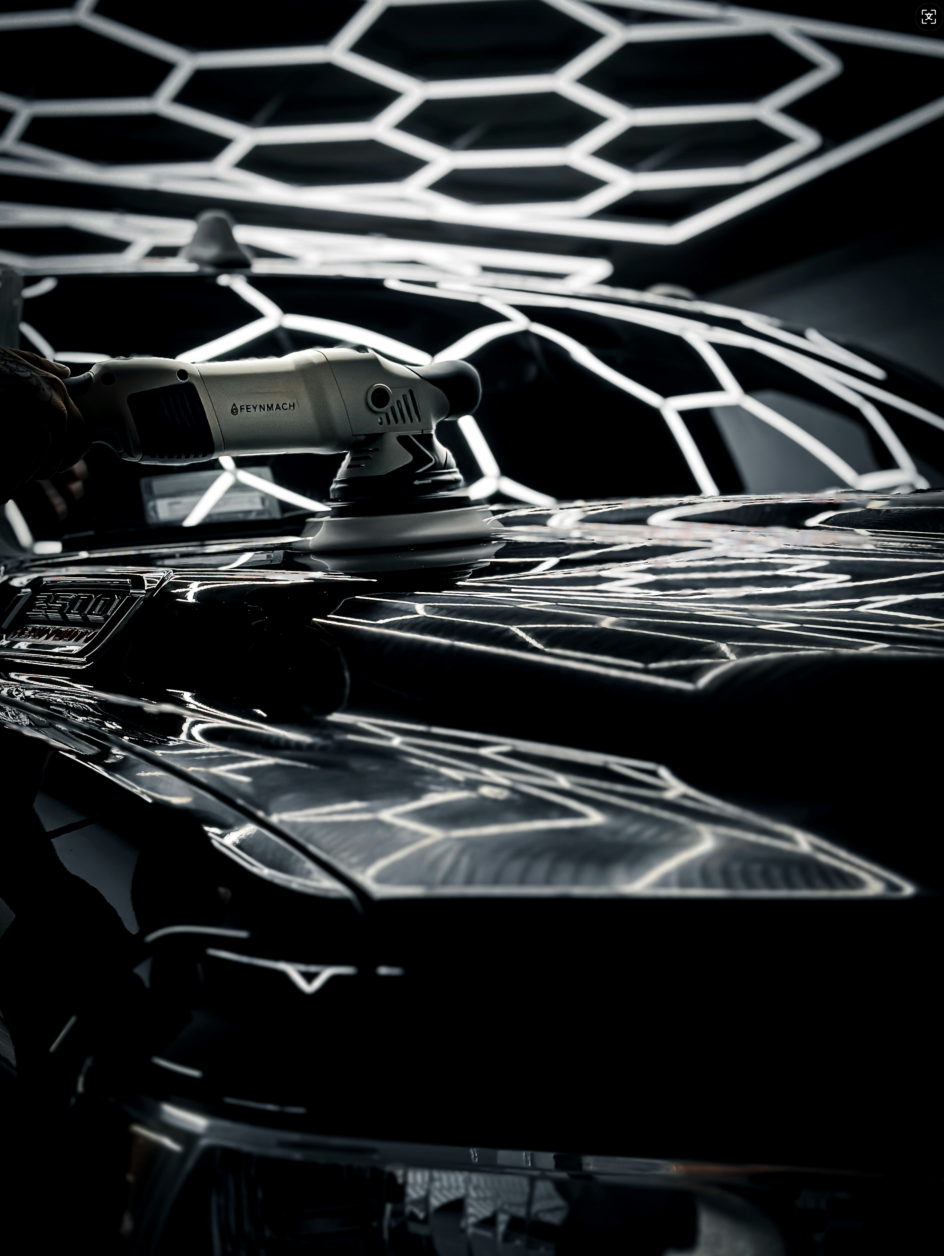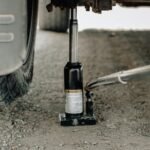Understanding the Different Types of Car Polishing Machines
When it comes to car polishing machines, selecting the right type is crucial to achieving optimal results. The market offers several types of polishing machines, each designed for specific tasks and user expertise. The primary categories include rotary polishers, dual-action (DA) polishers, and mini polishers. Understanding the mechanisms and advantages of each type can significantly influence your choices and the effectiveness of your car detailing process.
Rotary polishers are known for their direct drive system that rotates the polishing pad in a continuous circle. This type of polisher is powerful and efficient for cutting through heavy oxidation and correcting deep scratches. However, rotary polishers require a high skill level to operate, as improper usage can lead to paint damage or holograms. Professionals often favor these machines for their speed and precision on demanding surfaces.
On the other hand, dual-action (DA) polishers are versatile and user-friendly, making them popular among both professionals and DIY enthusiasts. These machines utilize an oscillating movement combined with rotation, which allows for safer paint correction without the risk of burning the surface. DA polishers are effective for light to moderate correction work and are particularly praised for their ease of use, making them suitable for beginners.
Lastly, mini polishers, also known as spot polishers, are designed for detailing smaller areas or intricate parts of the vehicle, such as headlights and tight crevices. Although they offer limited power, their compact size and precision make them an essential tool in a car detailer’s toolkit. Mini polishers are ideal for touch-ups and fine polishing tasks, enhancing overall detailing efforts.
Each type of car polishing machine presents unique advantages and potential drawbacks. Evaluating your specific needs and expertise level will help in selecting the machine that best complements your car polishing projects. Understanding these differences creates a foundation for mastering car detailing and ensuring a pristine finish.
Key Features to Look for in a Car Polishing Machine
When selecting the best car polishing machine, it is crucial to consider several key features that can significantly affect both ease of use and the quality of the polishing results. One of the foremost variables to assess is the power and RPM (revolutions per minute) of the machine. The power determines how effectively the machine can tackle tough paint imperfections. Generally, machines with higher RPM offer more efficient polishing but may also increase the risk of damaging the car’s surface if not handled properly.
Another important consideration is the weight and ergonomics of the polishing machine. A lightweight and ergonomically designed machine allows for better maneuverability, decreasing fatigue during extended use. It is essential for users to choose a machine that feels comfortable to hold and manageable to control, especially when working on larger vehicles or complex surfaces.
Speed settings are also critical as they provide versatility for different polishing tasks. A machine with adjustable speed settings allows users to fine-tune the intensity of the polish applied, catering to specific needs such as correcting scratches or finishing a surface. This feature is vital for achieving professional-grade results, ensuring that the desired finish is met without risking damage to the car’s paint.
Lastly, pad compatibility plays a significant role in choosing a car polishing machine. Different pads are designed for various applications, from cutting to polishing to finishing. Ensuring that the machine can accommodate a range of pads allows users to adapt their tools to various detailing tasks, effectively enhancing the quality of their results. By considering these features, consumers can make an informed decision when selecting a car polishing machine that best suits their needs.
Assessing Your Polishing Needs: DIY vs Professional Use
When considering the purchase of a car polishing machine, assessing your specific polishing needs is crucial. This evaluation primarily revolves around whether you will be using the machine for DIY car detailing at home or for professional purposes in a business setting. The choice significantly impacts the type of machine best suited for your requirements.
First, consider the frequency of use. If you are a weekend warrior who enjoys detailing your vehicle occasionally, a basic model with user-friendly features may suffice. These machines typically offer commendable performance without overwhelming the user with complex functionalities. However, if you plan to polish multiple vehicles regularly or shift between varying paint finishes, a more robust machine designed for continuous use would be more appropriate. Professional-grade machines are constructed to endure higher workloads and offer greater longevity.
Next, evaluating the type of vehicles you plan to polish is essential. If you primarily work with larger vehicles, such as SUVs or trucks, you may require a machine with a larger pad size and adequate power to cover extensive surfaces efficiently. Conversely, those focusing on smaller vehicles may opt for a compact, lightweight model that enhances maneuverability and ensures precision.
Finally, budget considerations cannot be overlooked. While premium machines often come with advanced features and prolonged warranties, they may not be necessary for casual users. Establishing a balanced budget allows one to select a machine that meets both performance needs and financial constraints. A comprehensive understanding of your requirements will lead to a thoughtful purchase, ensuring the selected polishing machine aligns perfectly with your detailing ambitions.
Budget Considerations: Finding Value in Your Purchase

When it comes to purchasing a car polishing machine, setting a budget is a crucial first step. The range of prices for car polishing machines can vary significantly based on features, brand, and build quality. Entry-level machines may start as low as $50, while high-end models can go upwards of several hundred dollars. Understanding where your budget falls within this spectrum can help narrow down your options and enable you to make an informed decision.
It is essential to strike a balance between quality and affordability. Opting for the cheapest option available may result in subpar performance and durability, which could lead to additional costs in the long run. Conversely, investing in a premium machine without assessing your actual needs might result in overspending. A middle ground approach—where you focus on value—often yields the best outcomes. Look for machines that offer a combination of durability, ease of use, and effective polishing capabilities at a reasonable price.
For those shopping on a limited budget, there are several high-value machines that deliver impressive results without breaking the bank. Brands such as Meguiar’s and Griot’s Garage offer models under $150 that are well-respected within the car detailing community for their reliability and performance. If your budget allows for a higher investment, consider premium options from reputable manufacturers such as Rupes and Flex. These brands often come equipped with advanced features that facilitate professional-quality results, making them worthwhile for avid car enthusiasts or professionals.
Ultimately, conducting thorough research and comparing options based on your specific needs and financial considerations will empower you to find the best value for your budget. By thoughtfully evaluating what you require from a car polishing machine, you can ensure your investment leads to satisfying and effective results for years to come.
The Role of Pads and Compounds in Polishing
When selecting a car polishing machine, understanding the various types of pads and compounds is crucial for achieving optimal results. Polishing pads are designed to work in tandem with specific polishing compounds, and their effectiveness largely depends on their compatibility with the polishing machine being used. Pads come in different materials, textures, and densities, and each type serves a unique purpose in the polishing process.
There are three main categories of polishing compounds: cutting, polishing, and finishing compounds. Cutting compounds are the most abrasive, designed to remove significant paint defects such as scratches and oxidation. They are typically used alongside harder pads and are suited for heavily weathered or damaged surfaces. On the other hand, polishing compounds are less abrasive and are intended for refining the paint’s surface and enhancing its gloss. Finally, finishing compounds are the least abrasive and are used to achieve a high-gloss finish while ensuring the paint surface is smooth and free of swirls.
Choosing the right combination of pad and compound is essential to meet the specific needs of the vehicle’s paint type and condition. For example, a soft foam pad paired with a polishing compound is an excellent choice for painted surfaces that require light correction, while a wool pad combined with a cutting compound is ideal for more challenging imperfections. It is also important to consider the type of paint on the vehicle, as certain pads and compounds may work better on clear coats versus traditional paint systems.
By carefully selecting the appropriate pads and compounds, car enthusiasts can maximize the effectiveness of their polishing machines, ultimately leading to superior results. The careful combination of these elements can transform a vehicle’s appearance, restoring its shine while maintaining the integrity of the paint.
Safety and Maintenance Tips for Using Polishing Machines
When utilizing a car polishing machine, ensuring safety is paramount. The first step involves wearing appropriate protective gear, including safety goggles, gloves, and a dust mask. These items serve to protect the eyes from debris and chemical residues, while gloves minimize skin exposure to potentially harmful substances. The use of sturdy footwear can also help prevent slipping or injuries during the polishing process.
Another crucial safety practice is to thoroughly read and understand the manufacturer’s instructions before operating the machine. These guidelines provide essential information specific to the model, including speed settings, pad compatibility, and operational procedures. Familiarizing yourself with the equipment will not only improve safety but also enhance the effectiveness of the polishing process.
It is also vital to work in a well-ventilated area to reduce the inhalation of fumes or dust produced during polishing. Additionally, keeping the workspace clear of clutter will help prevent accidents. Always be cautious of electrical hazards by ensuring that the machine is used with a properly grounded outlet, and avoid using extension cords if possible to reduce the risk of tripping.
In terms of maintenance, regularly inspect the polishing machine for any signs of wear or damage. Check the power cord for frays, and ensure that all attachments are securely fastened. Cleaning the polishing pads after each use is essential to maintain optimal performance, as debris can interfere with the polishing action. Furthermore, follow the manufacturer’s recommendations for routine maintenance, which may include lubrication or periodic inspections of moving parts.
By adhering to these safety and maintenance tips, users can enhance not only their safety but also the durability and performance of their car polishing machines. These practices ensure a smoother operation and contribute to the machine’s longevity, allowing for effective and safe vehicle care.
Popular Brands and Models in the Market Today
When it comes to selecting a car polishing machine, the variety of brands and models available can be quite overwhelming. Some brands have established themselves as industry leaders, known for their durability, innovative technology, and user-friendly features. Among the most reputable brands is Makita, renowned for its high-performance machines that cater to both beginners and professionals. Models like the Makita 9237CX3 are praised for their powerful motor and variable speed settings, providing versatility for different polishing applications.
Another popular choice is Porter-Cable, which offers user-friendly polishing machines suitable for novices. The Porter-Cable 7424XP orbital polisher is particularly favored due to its lightweight design and ease of use, making it an ideal entry point for those new to car polishing. Its random orbit action ensures a swirl-free finish, which is a critical feature for maintaining a vehicle’s aesthetics.
DeWalt also stands out in the market, with models such as the DeWalt DWP849X being a preferred option among car detailing enthusiasts. This model features an ergonomic design and high torque, effectively tackling stubborn paint imperfections. The durability of DeWalt products is often highlighted in user reviews, assuring buyers of long-term reliability.
In addition to these established brands, emerging brands like Flex and SUNLIGHT are gaining traction. Flex’s PE 14-2 150 is recognized for its lightweight build and powerful performance, catering specifically to car polishing professionals. SUNLIGHT, on the other hand, is noted for offering budget-friendly yet effective polishing machines, catering to car owners looking for quality without breaking the bank.
Choosing the right machine involves considering user feedback, product specifications, and personal polishing needs. Each of these brands offers a unique combination of features, ensuring that users can find a model that suits their specific requirements in the car care industry.
Real User Experiences: Customer Reviews and Feedback
When selecting a car polishing machine, actual user experiences play a crucial role in understanding the performance and reliability of various models. User reviews often encompass both positive and negative aspects, providing potential buyers with a well-rounded perspective. Many users have shared their satisfaction, particularly with machines that boast powerful motors and multiple speed settings, enabling them to achieve a professional-level finish.
For instance, a prevalent theme among positive testimonials is the ease of use associated with certain brands. Many users appreciate machines that are lightweight and ergonomically designed, allowing them to polish their vehicles without experiencing fatigue. Additionally, customers highlighted the efficiency of dual-action polishers, which tend to minimize the risk of damaging the vehicle’s paint while maximizing shine. Users also noted that some machines come with additional pads and accessories, enhancing the overall value.
On the flip side, some reviews caution against machines that may initially seem appealing due to their lower prices. According to various users, these options often compromise on quality, leading to malfunctions or unsatisfactory results, particularly on tougher paint imperfections. Some customers express frustration regarding the durability of certain components, as they expected better longevity based on initial marketing claims. Furthermore, issues such as overheating during extended use have been reported, underscoring the importance of selecting a machine that can withstand prolonged polishing sessions without performance drops.
In conclusion, when considering user feedback, it is important to analyze both positive and negative reviews to develop a comprehensive understanding of car polishing machines. This approach allows potential buyers to make informed decisions, tailoring their choice to align with their specific needs and expectations.
Conclusion: Making the Right Choice for Your Car Polishing Needs
Choosing the right car polishing machine is a significant decision that can greatly impact the condition and appearance of your vehicle. Throughout this comprehensive guide, we have discussed several critical factors to consider, allowing you to make an informed choice tailored to your specific car care requirements. Understanding your needs, whether aggressive paint correction or gentle finishing is essential for selecting the appropriate machine.
One of the key considerations highlighted in our discussion is the type of polishing machine that best suits your skill level and the intricacy of the tasks you intend to accomplish. For beginners, dual-action polishers may provide the necessary safety and ease of use, while experienced users might prefer rotary polishers for their ability to achieve faster results. It’s crucial to evaluate your comfort and familiarity with each type before proceeding with a purchase.
Furthermore, we emphasized the importance of recognizing the specific features of each polishing machine. Factors such as pad size, motor power, weight, and interchangeable accessories play a vital role in achieving optimal results. Each feature contributes not only to the effectiveness of the machine but also to the overall user experience. Balancing these elements according to your personal preferences will lead to better car polishing results.
We encourage you to take your time when evaluating the various options available on the market. Consider factors such as budget, machine quality, and anticipated frequency of use. Investing in a car polishing machine that aligns with your needs is crucial to ensuring satisfaction and enhancing the longevity of your vehicle’s finish. By taking a well-informed approach, you can confidently select a polishing machine that meets your expectations and enhances your car’s appearance.

